Aero is the future: Why you should be paying more attention to aerodynamics
How aero you and your bike are dictates how fast you go, yet few of us pay it much attention. Change, though, is literally in the air
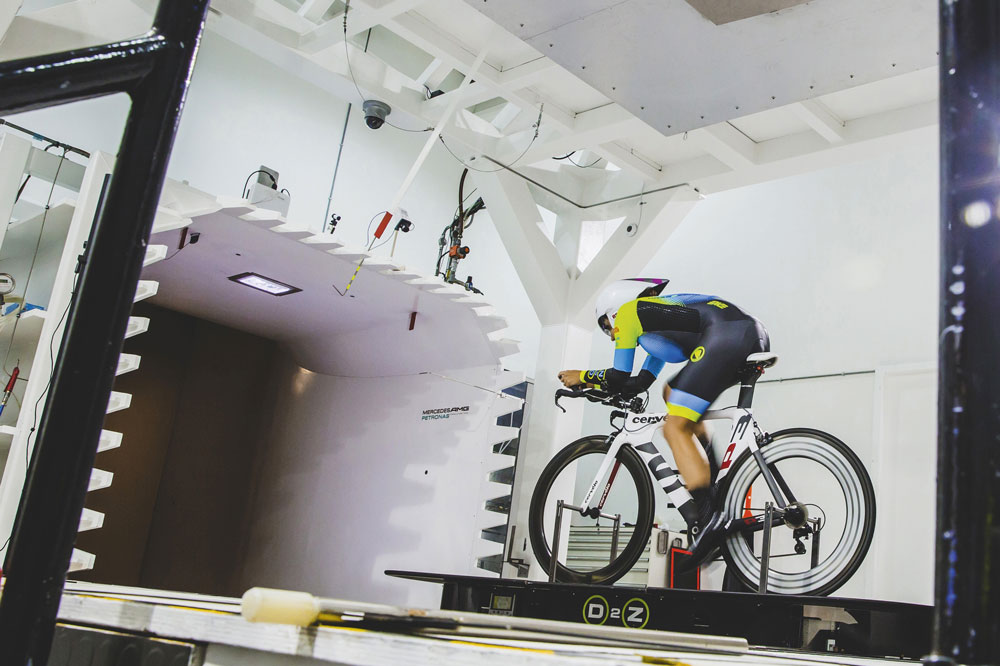

How much does your bike weigh? Chances are you’ve got a pretty good idea.
You may have even bought it on the strength of — among other things — how light it is, and have spent a good deal of money bringing this figure down even further. Good.
How about your coefficient-of-drag area? (That’s cdA to you and me). What, roughly, would you say that is?
>>> At what point does aero become more significant than weight?
If you have even the faintest idea, you’d be in a small minority and yet it is this measurement above all else which decides how fast you can ride your bike.
The aero profile of yourself and your bicycle and how you fit together to push through the wind is what determines your cdA.
And given that, at 20mph, 80 per cent of your effort is expended on overcoming wind resistance, it’s a figure you should probably get aquainted with.
Get The Leadout Newsletter
The latest race content, interviews, features, reviews and expert buying guides, direct to your inbox!
Knowledge, as they say, is power. Of course, this is something you may well have done already if only there was a simple way to do so that didn’t cost more than your bike itself.
In fact, cost-effective solutions are out there — they just take a little tracking down. What’s more, the tide is turning ever faster in favour of aerodynamics.
>>> How much faster does a skinsuit make you? (video)
For the vast majority of bike rides and races, there is so much speed there for the taking in this way, that once the tools for solving the problem become widely accessible, it’s unlikely we’ll look back.
It’s probably unnecessary to introduce Chris Boardman. His accomplishments number many, and as part of British Cycling’s fabled Secret Squirrel Club, knowing a thing or two about aerodynamics is one of them:
“I think everybody knows theoretically that aerodynamics is the main force that governs how fast you go,” he says,
“but then you go into a bike shop, pick a bike up and go ‘oh isn’t that light!’ — even though we’ve read articles that tell you how unimportant it is.
“As to how you convince people,” he adds, “you don’t have to convince them, all you have to do is give them the tools to look for themselves and then it becomes a self-fulfilling prophecy.”
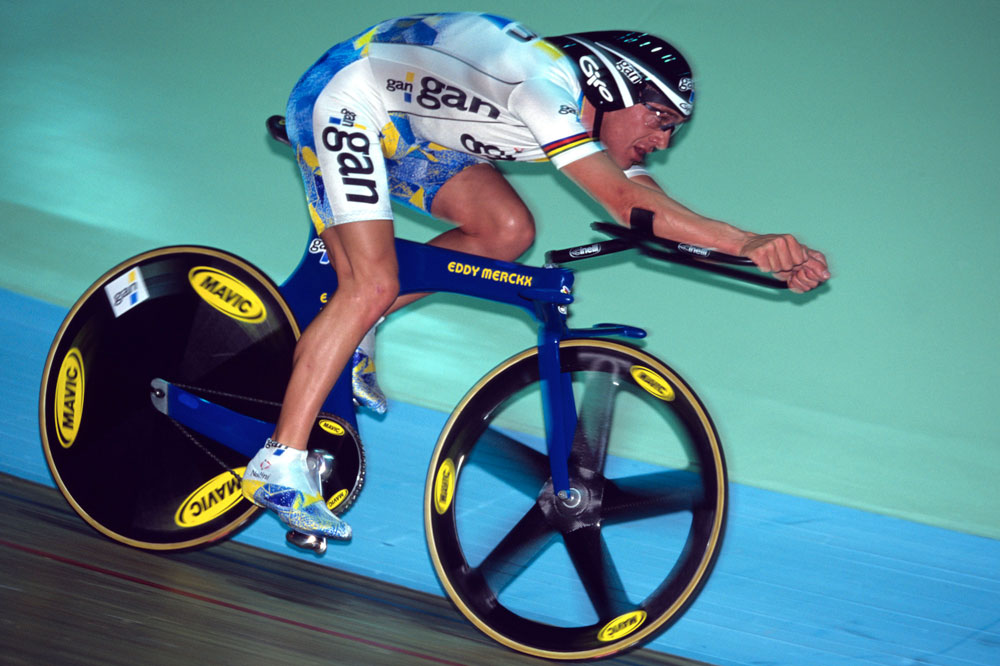
So convinced is Boardman of aerodynamics’ value for cyclists of all kinds, he’s decided to set up his own cycling-specific wind tunnel, due to be ready by the end of the year.
While there are plenty of bike riders of all persuasions who remain to be convinced of the value of a heavier, more aero frame or wheelset over a lighter model, Boardman is no lone voice in the wilderness.
Nearly every major bicycle manufacturer features at least one aero road model in its line-up, while the pro peloton is awash with deep-section wheels and tight-fitting speedsuits.
It’s just a matter of time and a little more awareness says Chris Yu, head of applied tech at Specialized:
“Aero wasn’t even part of the conversation until relatively recently,” he notes. “But now the conversation’s rolling. Once there’s that mass understanding it’ll flip pretty quick, I’d say.”
The basics are already in place: deeper-section wheels are an accepted and widely adopted way of gaining extra speed, while closely fitted clothing and aero-styled helmets have proved popular even in non-competitive circles.
Project Boardman
Many of the best ideas are conceived on the back of a table mat over a few beers in the pub, and Chris Boardman’s wind tunnel project wasn’t so different.
It was over a curry with aero expert Rob Lewis — a fellow member of British Cycling’s fabled Secret Squirrel Club — that the idea was first mooted.
>>> Icons of cycling: UK Sports Institute track bike
“We were sitting down having a curry,” Boardman recalls, “and he said, ‘Wouldn’t it be good if we could do it for the price of this curry?
"If my hobby cost thousands of pounds then I might do it once, but if it cost this kind of amount of money then I’ll do that on a regular basis.’
“And that was the genesis for thinking how could we make a viable, accurate wind tunnel for cyclists.”
Wind tunnel access for cyclists is very expensive, and not exactly widely available, Boardman explains:
“There’s a couple of pockets in the world that have either produced a rudimentary [cycling] wind tunnel, though the air quality’s not good, others that have used commercial wind tunnels that are built for other things, and have managed to scab some time for cyclists. So it’s been dawdling on a fraction of a per cent around the world.”
By stripping out a tunnel’s automotive capabilities Boardman and Lewis found costs could be brought down massively.
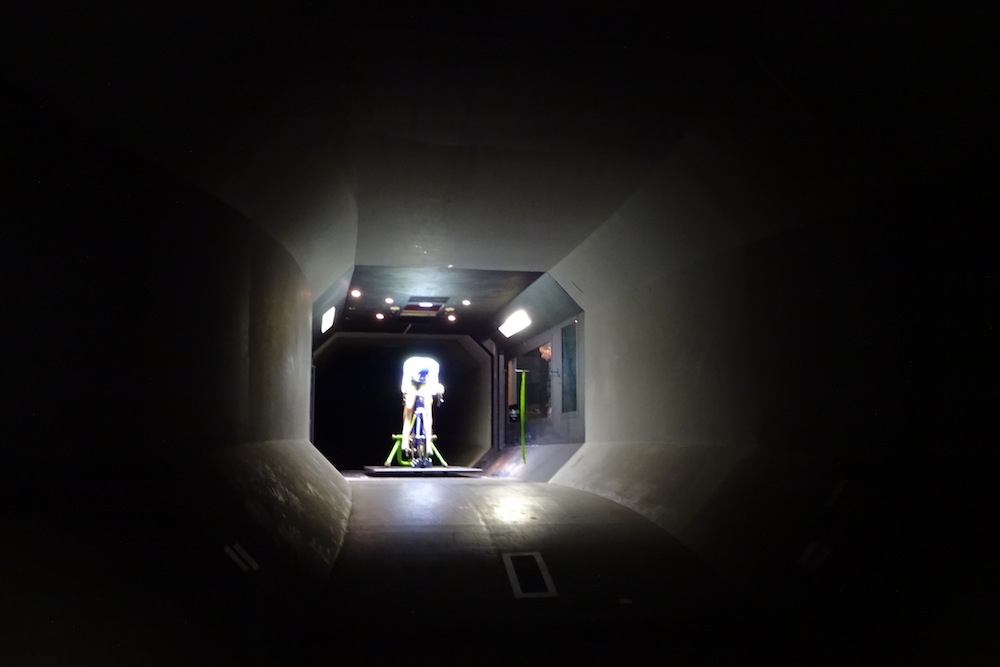
“Particularly if you stop working with people from the F1 industry as well, where they just put zeroes on the end cos that’s what you do,” Boardman deadpans.
The tunnel will be bookable online, offer instant, useable aero data in any format you like — be that your cdA, time saved in a 25-mile time trial and everything in-between — and as for that price?
“The cost of the curry was the starting point,” says Boardman. “Let’s just say the cost of a very good curry for a couple of people, and that’s as close as I can get it at the moment. But it’s an accessible price.”
Planning permission was secured for the facility’s Evesham site at the end of last year and is set to be finished at the end of 2017.
The tunnel itself will be housed in what Boardman calls a “performance centre” along with a physiological testing suite, shops, cafes and also the Boardman Bikes HQ.
“If you’re interested in going faster, be it in a sportive or at the highest level of pro racing, there’ll be a place that you can come and have services that are there for you,” enthuses Boardman.
“I’m not one for over-dramatisation but if it becomes a standard part of how people try to go faster, then it is revolutionary.”
What a drag
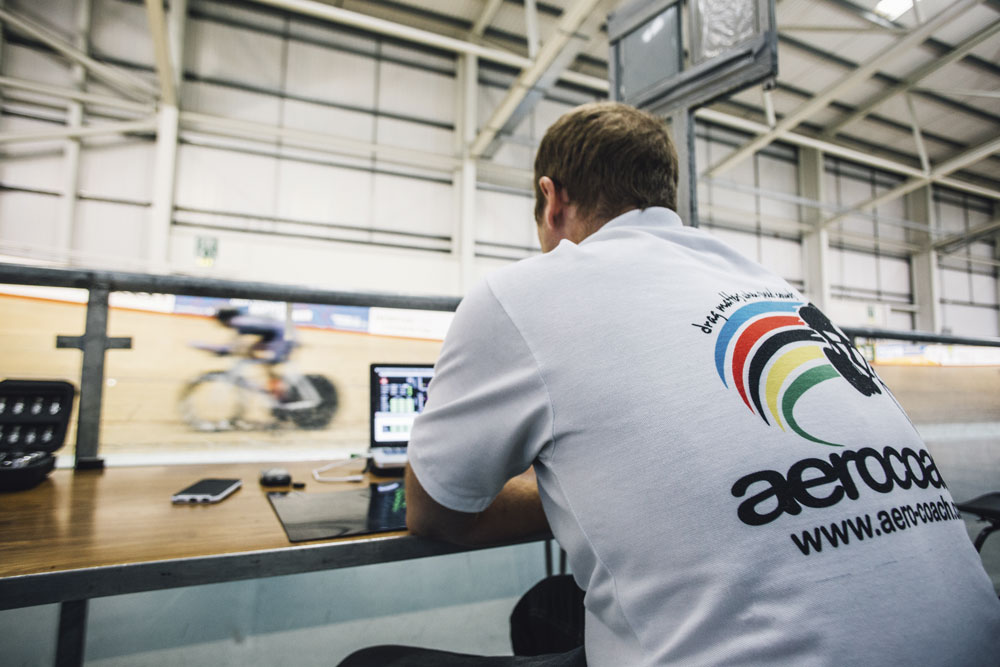
It won’t be for everyone though, says Dr Xavier Disley.
He heads up aero testing and kit company Aerocoach, where one of his specialisms is velodrome testing using the Alphamantis Track Aero System, which crunches power and speed numbers against various other rider stats to estimate drag factor.
It’s an accessible way into testing which claims to yield signficant gains, but Disley concedes that for many non-competitive riders the pursuit of aerodynamics just won’t resonate:
“I don’t think in the future you’re going to see packs of riders in sportives where everyone’s looking like Cancellara chewing the stem, doing a solo breakaway, it’s just not going to happen.
"But I think you’ll see more people taking a bit more care in making sure their position — and all their equipment — is better.
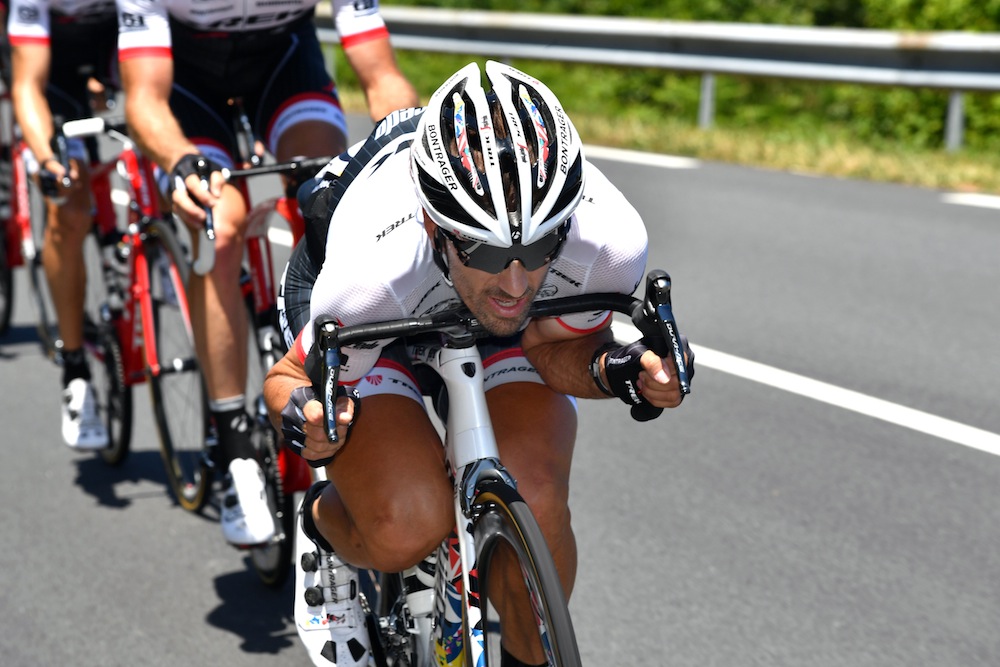
“Just having it in the back of your mind does the job too,” he adds. “But I don’t see the whole sportive market turning into people bent over on their hoods.”
But as Yu points out, there’s more to aerodynamics than just going fast.
His team at Specialized have what might be the ultimate aero R&D tool — an in-house wind tunnel, and he reports that:
“one of the things that was a pretty stark realisation for us — especially after the wind tunnel got built — was understanding that aero was much more than speed.”
>>> Specialized S-Works Venge ViAS Di2
Things like stability and handling confidence, efficiency, and he reveals, “even down to things like how comfortable is kit — is it flapping or making a lot of noise? This past year we looked at rain fenders [mudguards].
"People would say ‘how is that aero?’
"Well, when you’re riding a bike, water gets kicked up and the path it travels is completely defined by the windflow over you and the bike. So to design an effective rain fender even, that’s an aero problem.”
It’s obvious that aero has a lot to offer us all. In terms of outright speed — what Yu very appropriately terms “the pointy end” of the issue — it means faster times for no more effort.
Surely a Holy Grail in cycling. The manufacturers appear to be on board and it seems all but inevitable that aero’s widespread adoption will bleed out of pro cycling and into the ranks of the everyday rider.
How it will play out over the coming years is an exciting prospect.
In terms of equipment, says Disley, the buzzword will be integration:
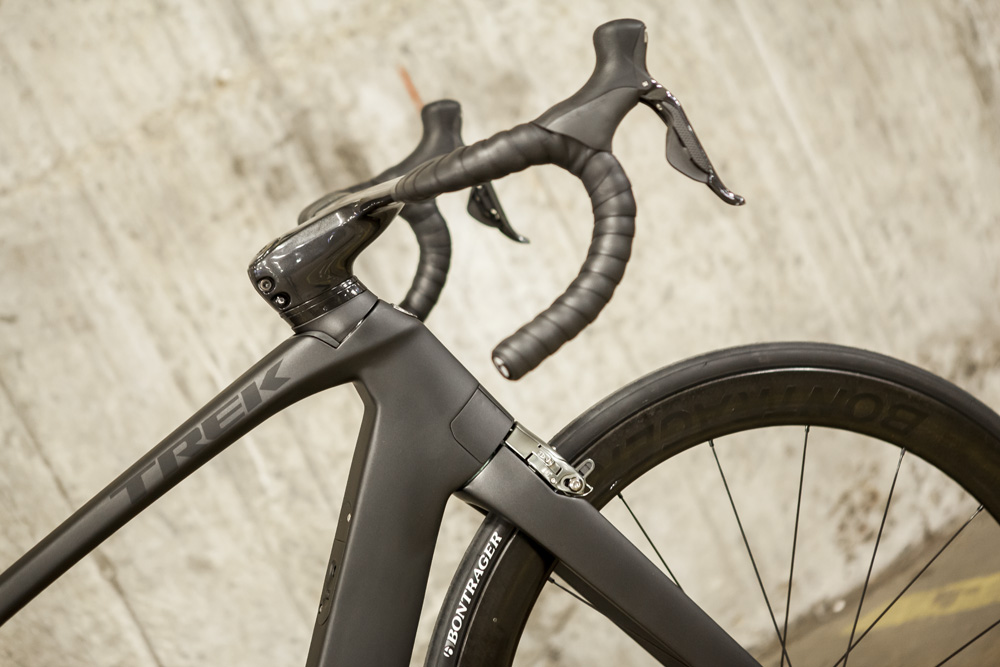
“The only way to make something as fast as possible is to integrate it, so you see these bikes these days like the new Trek bikes, Scott Foils and the Canyons, and they all come with handlebars, and some of them are designed for particular wheel systems and stuff like that.
"I think what you’ll find is that manufacturers will be pushing people towards a complete system, rather than adding components together.”
Inclusive approach
It’s a prediction echoed by Yu:
“If you look at any company that’s making a fast, efficient vehicle, you have to address every part of it.
"So we’re starting to see that from bikes like our Venge Vias and some competitor bikes as well, where in order to squeeze the most performance out of it, you kind of address how everything works together, and not just the traditional thought of a bike frame as a parts hanger.”
Of course, the bicycle itself is but an ethereal wisp compared to the bulk of even the smallest of riders, and it is inevitably rider position that plays the biggest part in deciding how cleanly you slice through the air.
Once we’ve decked ourselves out in well-fitted kit and crouched low over the bars, it’s traditionally been difficult to make any further gains, but companies like Aerocoach, and Boardman with his ever more anticipated wind tunnel, are paving the way towards accessible, affordable aero testing.
Watch now: How much speed can you buy?
As Boardman says: “Without that massive piece of information of ‘what’s the aero cost of this’ you are just guessing — and we’ve been guessing since the start of racing bicycles.
"Sometimes very informed guesses, but they’re still guesses. It’s a massive assumption that lower is better and higher is worse — sometimes it isn’t, depending on the body shape.”
Testing is, he says, as much about being able to make an informed choice as pursuing outright speed:
“I’ve been in the tunnel with people who’ve had said: ‘Oh look, that’s 30 seconds faster over 40km, but it’s so uncomfortable that I’m prepared to give that up for a more comfortable position.
"And you get another time where you go, ‘That’s really uncomfortable, I’m not sure I can maintain that, but it says there’s a three-minute gain there, so I’m probably going to stick with it’.
"It just allows people to make that choice — even if they choose not to do something, they know what it’s costing them.”
Specialized’s Yu takes up the thread: “It’s complex to be able to quantify aero, and that’s why we have wind tunnels. But it’s just a matter of technology and time.
"There are a lot of ways you can get very good estimates of how efficient something is by doing testing in a velodrome or even out on the road.
"I think that will be a big part of the future of aero, that as people understand it, and crave it, they will want to be able to measure it just like anything else, so that technology will just go viral to allow that experience.”
Divisive dynamics
Despite the obvious benefits, aero will always be like politics — something that affects everybody and yet something that many people simply aren’t interested in.
For many of us, crunching numbers in the relentless pursuit of an extra mph here and there is the complete antithesis of what cycling is about — which is fettling the drivetrain on a cherished road bike before saddling up for a leisurely spin along sunny lanes.
But for others, the science and the numbers is as exciting and rewarding as the riding itself.
Wherever you fall on the spectrum you can be assured of one thing: faster, more efficient bikes and more accessible testing are on their way.
Speed, while perhaps not entirely free, will be there for the taking.

Thank you for reading 20 articles this month* Join now for unlimited access
Enjoy your first month for just £1 / $1 / €1
*Read 5 free articles per month without a subscription

Join now for unlimited access
Try first month for just £1 / $1 / €1
After cutting his teeth on local and national newspapers, James began at Cycling Weekly as a sub-editor in 2000 when the current office was literally all fields.
Eventually becoming chief sub-editor, in 2016 he switched to the job of full-time writer, and covers news, racing and features.
A lifelong cyclist and cycling fan, James's racing days (and most of his fitness) are now behind him. But he still rides regularly, both on the road and on the gravelly stuff.
-
 A bike rack with an app? Wahoo’s latest, and a hub silencer – Sea Otter Classic tech highlights, Part 2
A bike rack with an app? Wahoo’s latest, and a hub silencer – Sea Otter Classic tech highlights, Part 2A few standout pieces of gear from North America's biggest bike gathering
By Anne-Marije Rook
-
 Cycling's riders need more protection from mindless 'fans' at races to avoid another Mathieu van der Poel Paris-Roubaix bottle incident
Cycling's riders need more protection from mindless 'fans' at races to avoid another Mathieu van der Poel Paris-Roubaix bottle incidentCycling's authorities must do everything within their power to prevent spectators from assaulting riders
By Tom Thewlis